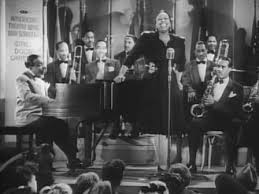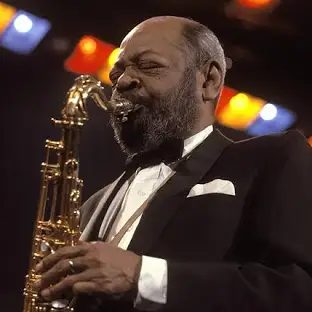9 Count Basie (Swing)

Was a bit different than Duke Ellington and His Orchestra. Came out of Kansas City, which made them want to have more improvisation than Ellington's orchestra (they weren't as composed). They are riff based, so they would improvise off of one another.
While Ellington's band was more swing feel, the Basie feel is really swing (they swing the hardest). Unlike Benny Goodman and his band where Gene Krupa would drive the rhythm section, the whole rhythm section here would get locked in an act like one guy.
The members were, specifically in this rhythm section:
- Count Basie (piano)
- Walter Cage (bass player)
- Freddy Green (guitar player)
- Jo Jones (drums)
Songs they played:
- One O'Clock Jump
- Taxi War Dance
- Lester Leaps In
More contemporary Basie (mid-era Basie, with different players): - Jumpin' at the Woodside
- Whirly Bird
- Corner Pocket
There's an album called The Count Meets the Duke where both their styles mix with Duke Ellington and His Orchestra's.
Another tenor sax player, he has a more intense sound unlike Lester Young. He's more frantic/frenetic. Played primarily in the song Body and Soul.

Played by Coleman Hawkins, the primary thing about this song is the melody at the start.
Notes:
- Coleman is taking the whole song and just soloing like crazy over it.
- Based off the old standard of the same name.
- Listen to his style. It was a hit between the public and musicians alike.
- His tone is really low and somber. It's super distinguishing.
- The rhythm seems to work in tandem with the solo (or the other way around). Coleman is adding almost syncopated rhythms, and trying to make the melody go high with the drum upbeat.
Played by Coleman Hawkins and another tenor player Chu Berry.
Notes:
- When it transfers over to the saxophone, you can think of the trumpet being played as a saxophone. He's playing the melody in a continuous stream, unlike Louis Armstrong who would play high and peck those notes.